35 Shock
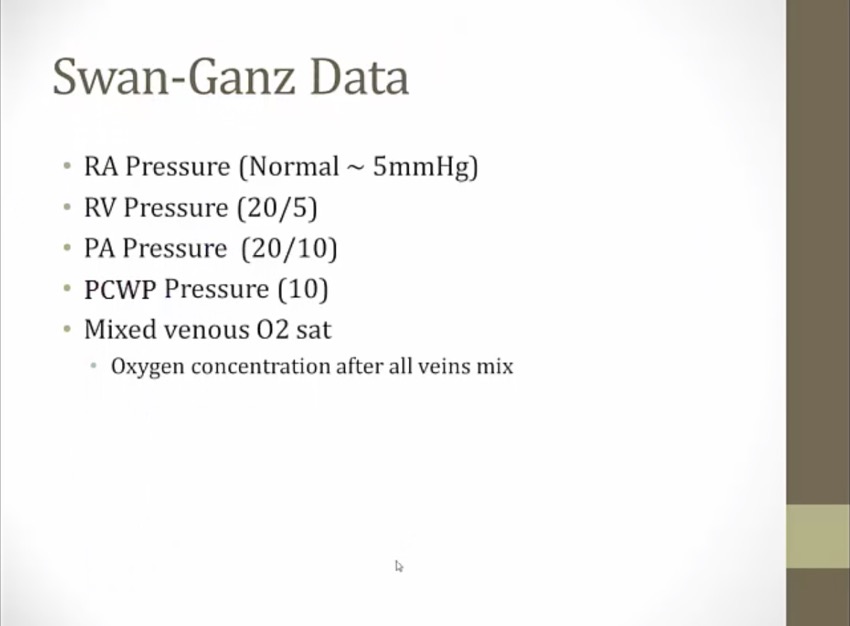
- RV: contracts, generate high systolic
- PA: same systolic, PV close and stop pressure drop at 10
- can also take blood sample and measure O2 sat

Swan-Ganz Catheter
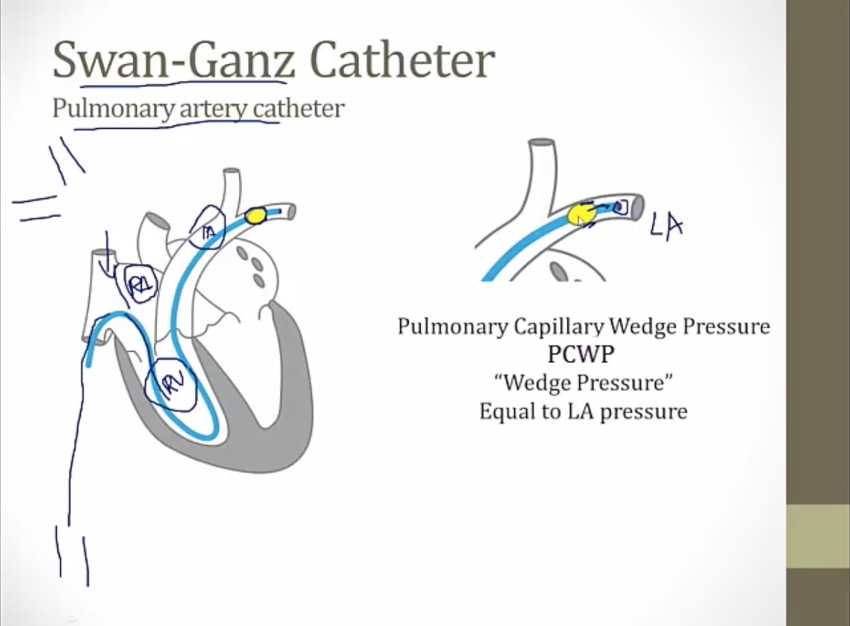
- usually inserted into jugular vein or subclavian. Or femoral vein up to IVC
- can be stopped in different chamber and measure pressure: RA, RV, PA, wedge pressure
- PCWP: push balloon until it can't go any further, stuck in PA, tip of catheter just beyond balloon, measures LAP
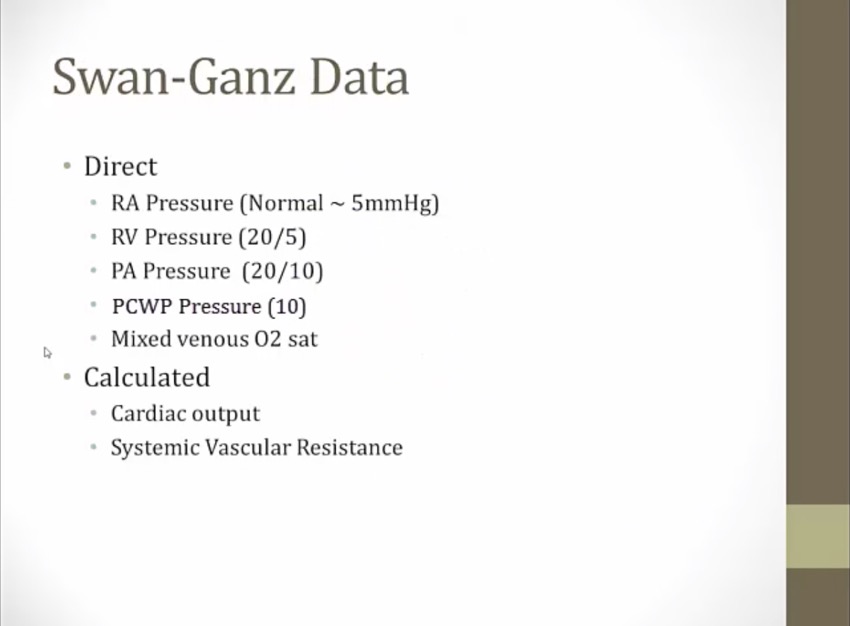
- total hemodynamic assessment from swan-ganz
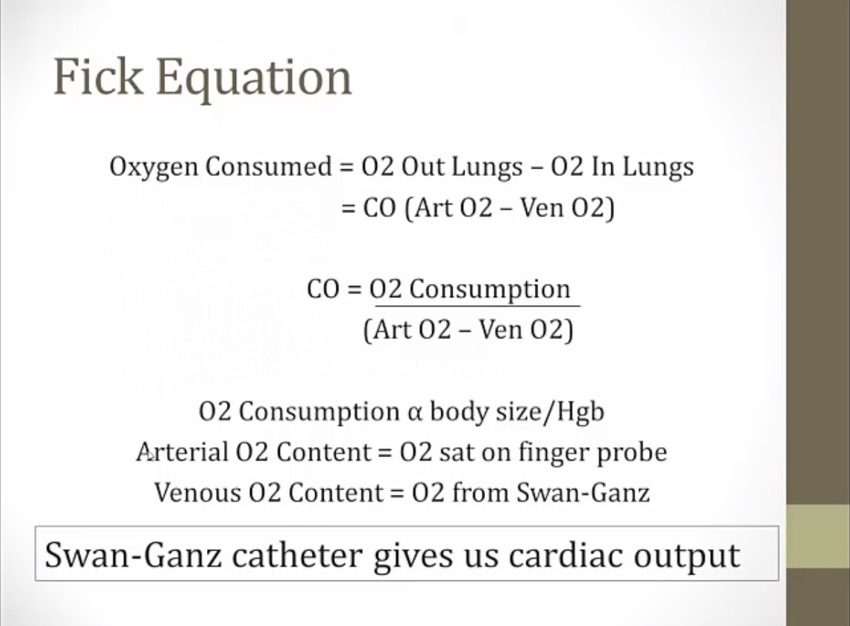
- O2 consumption, arterial and venous O2 can all be found from swan ganz catheter
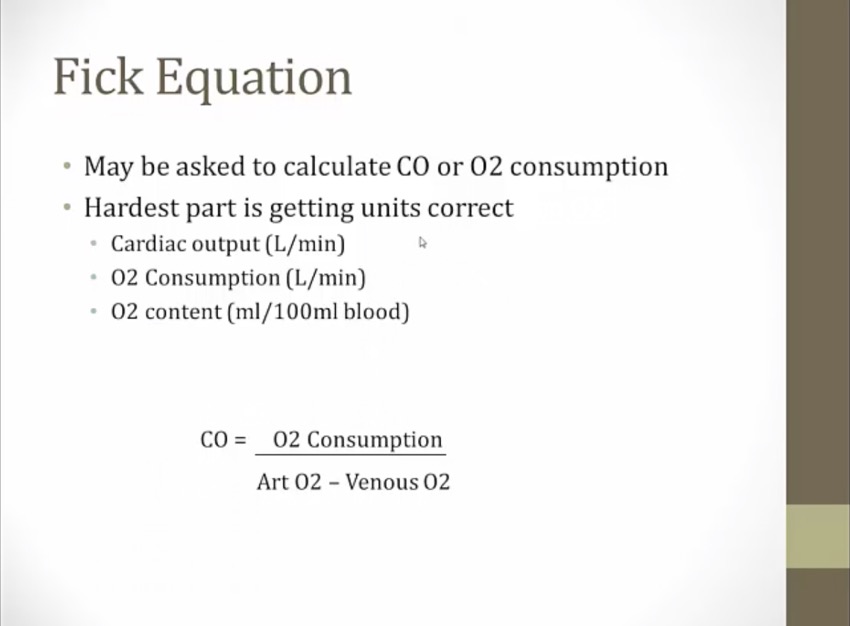
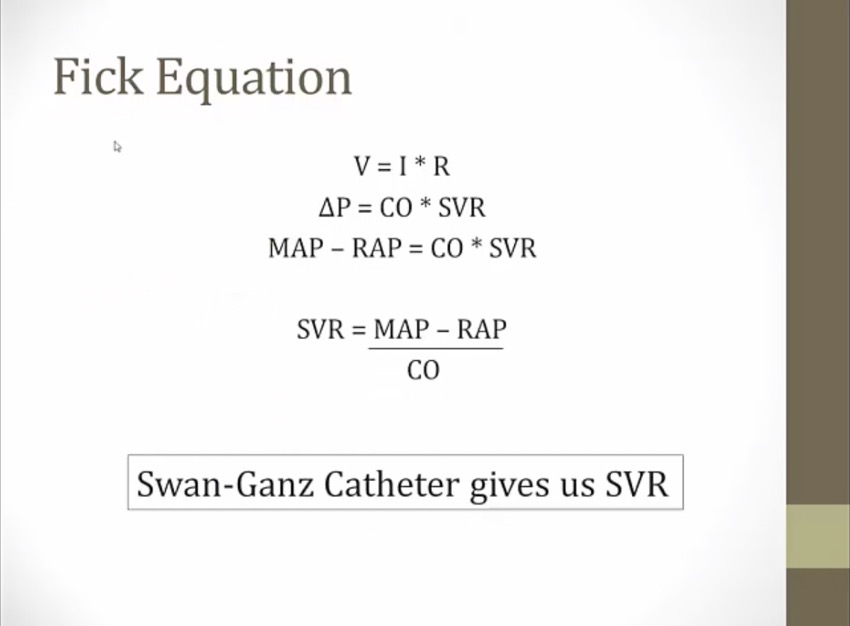
- MAP: pressure leaving heart
- RAP: pressure returning to heart
Shock
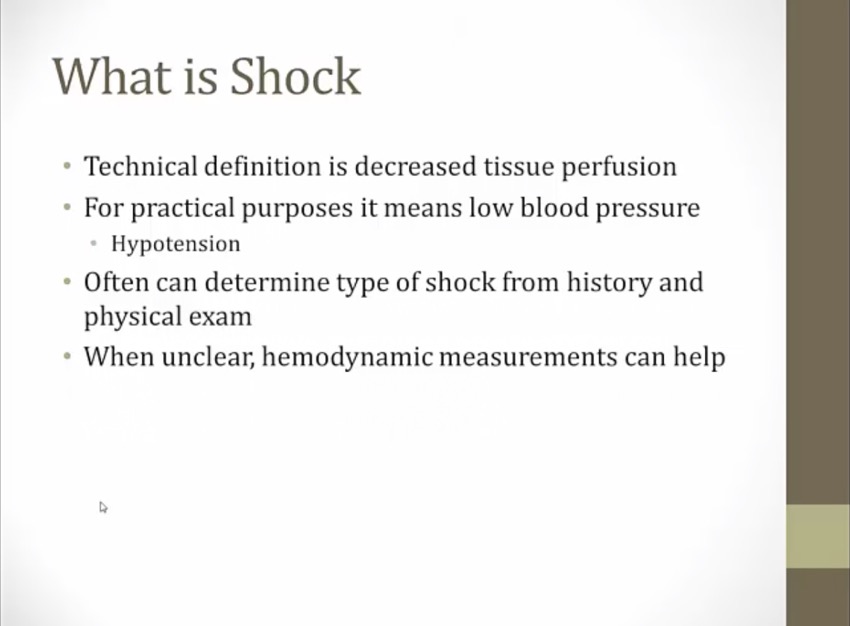
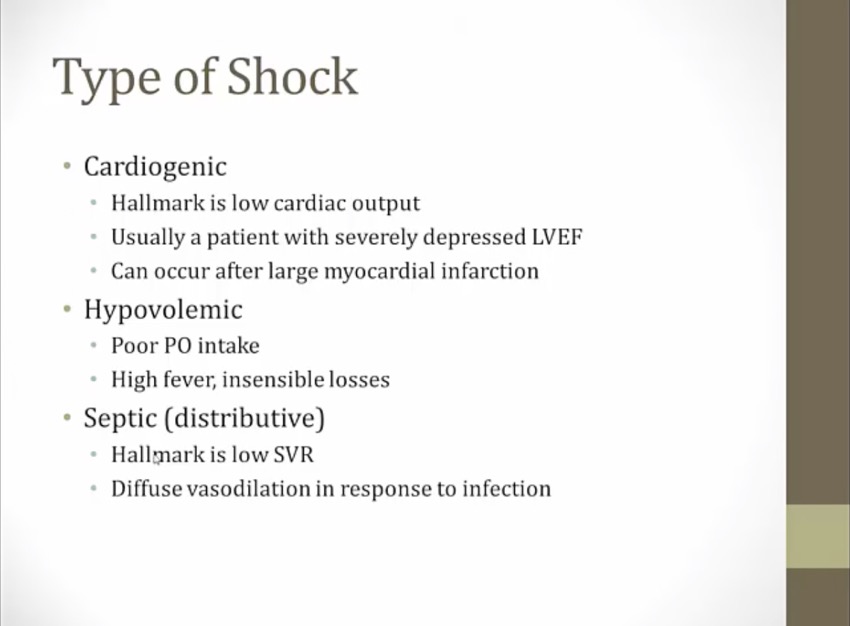
- cardiogenic: weak heart can't pump
- insensible loss: lose fluid in lungs/diarrhea/vomiting, not sensed by body compared to flood loss through kidney
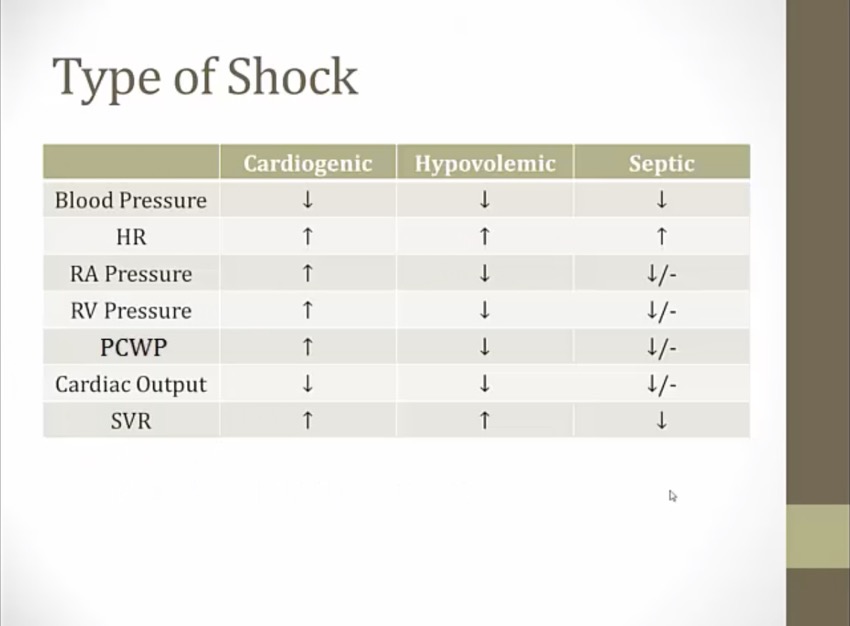
- high HR: body response to increased sympathetic drive
- cardiogenic: hallmark low CO from weak muscle, blood back flow to all heart chambers
- hypovolemic: low CO, all low chamber pressure from low blood volume
- septic: hallmark low SVR, early dilation of veins = all low pressure, in hospital may be normal from IV fluid
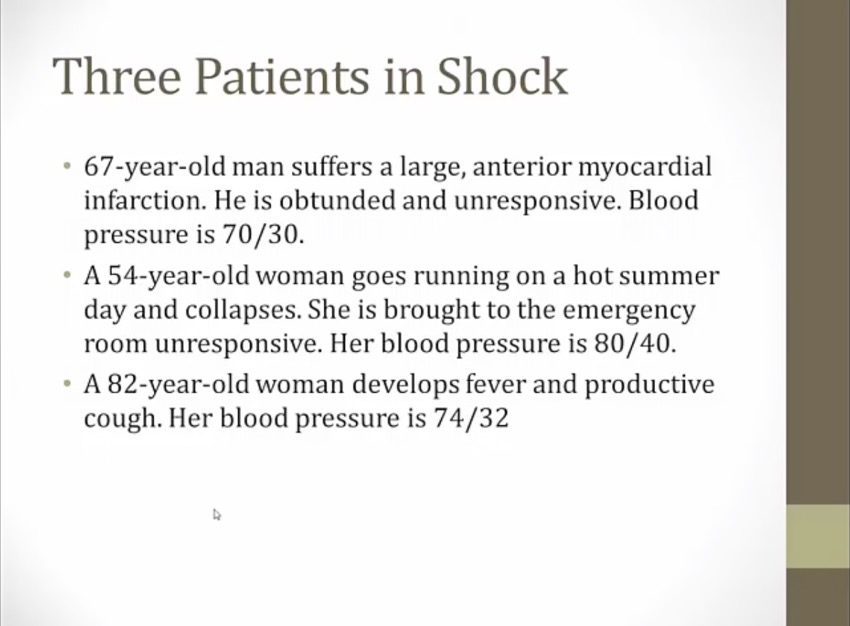
Equalization of Pressures
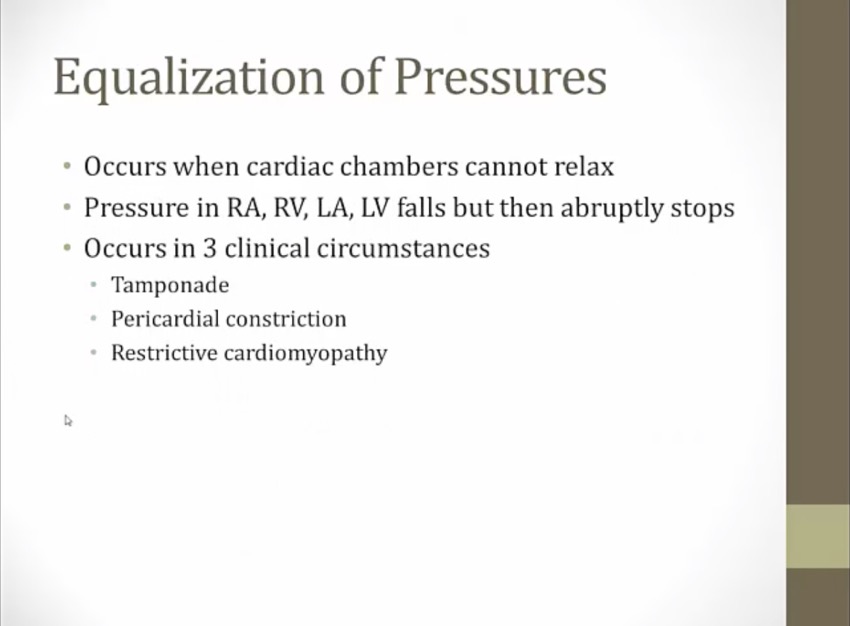
- tamponade: effusion of blood
- pericardial constriction: constricting sac
- restrictive cardiomyopathy: infiltrative substance
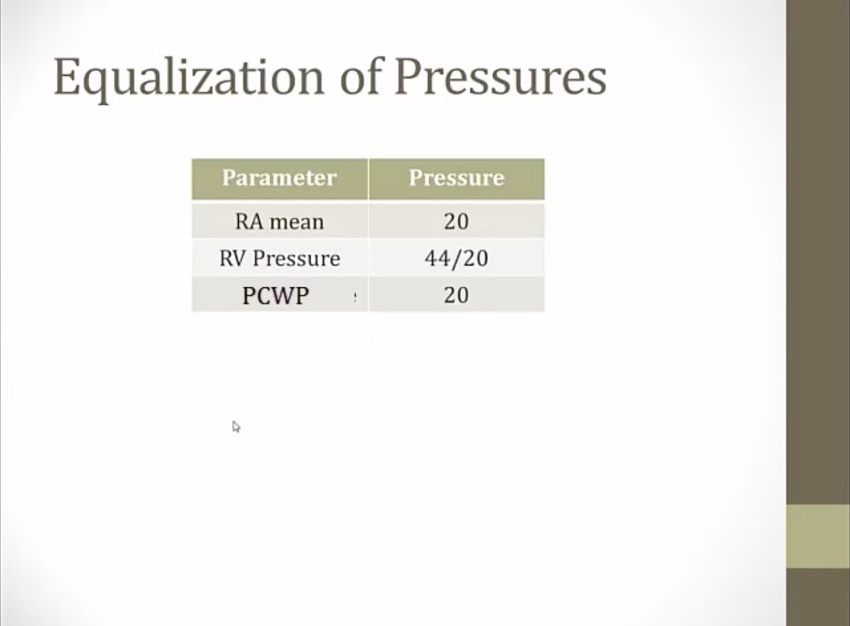

Valvular Disease
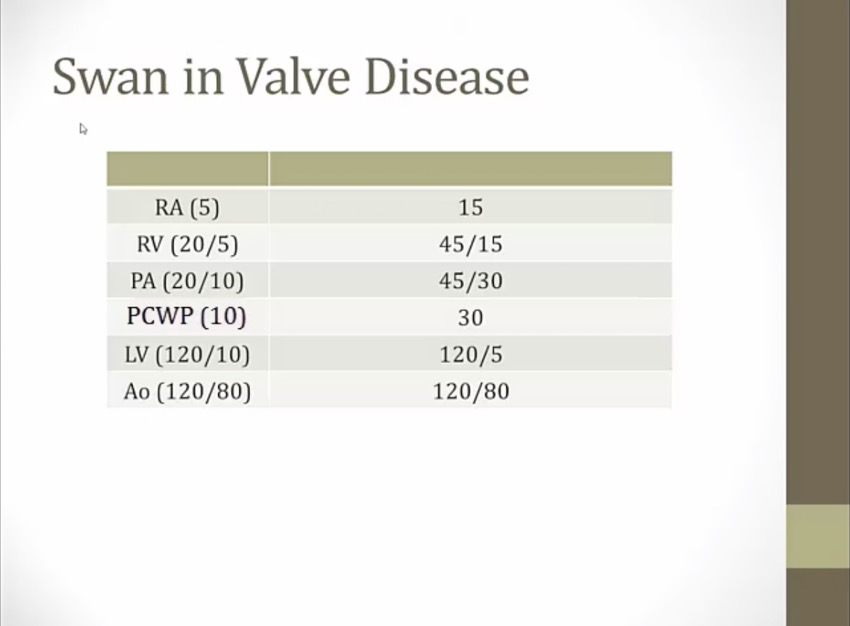
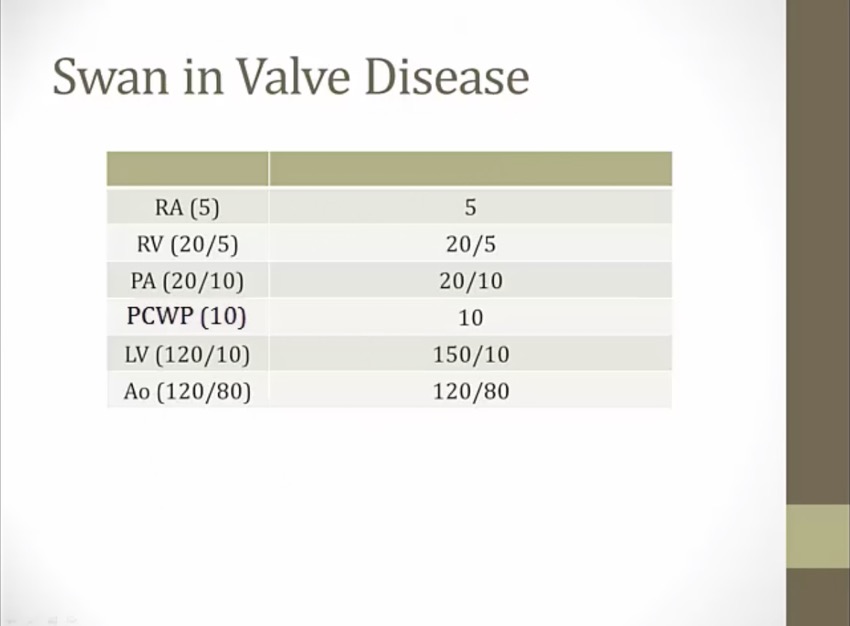
- aortic stenosis, high LV systolic pressure
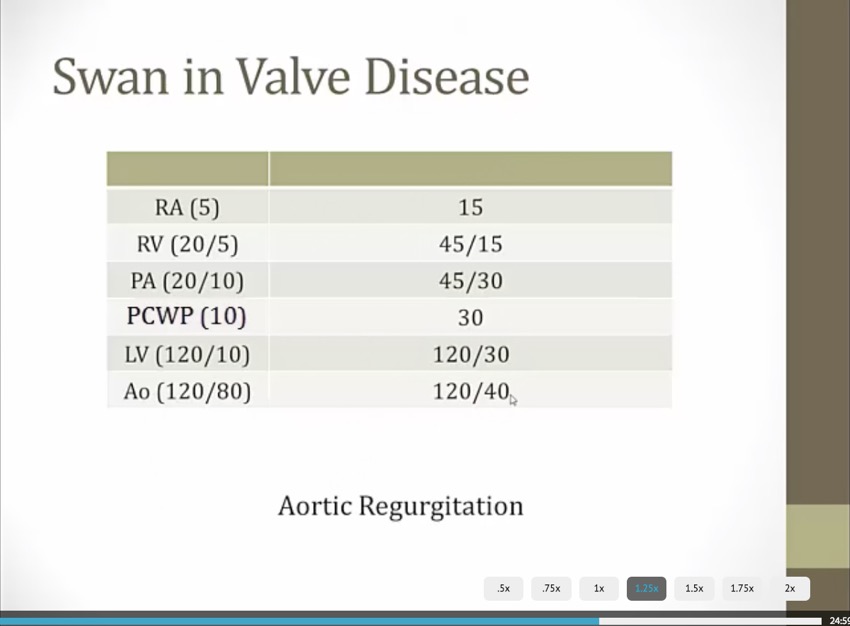
- wide pulse pressure
- blood spilling out of aorta in diastole
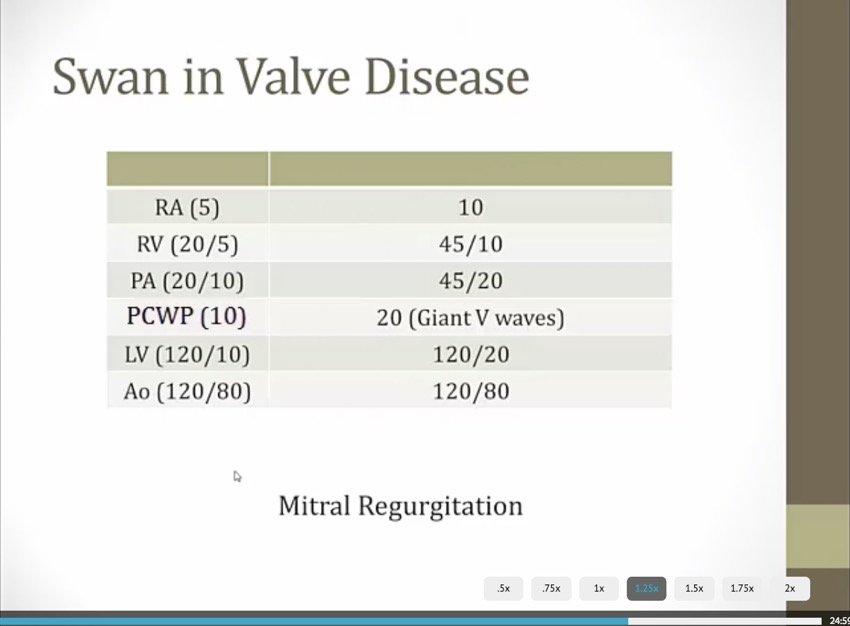

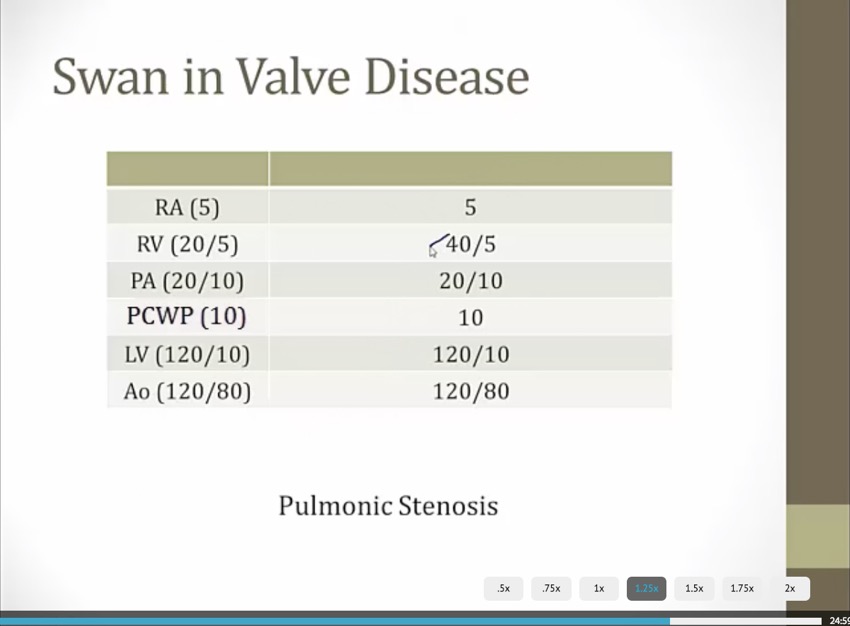
- RV and PA systolic should be equal
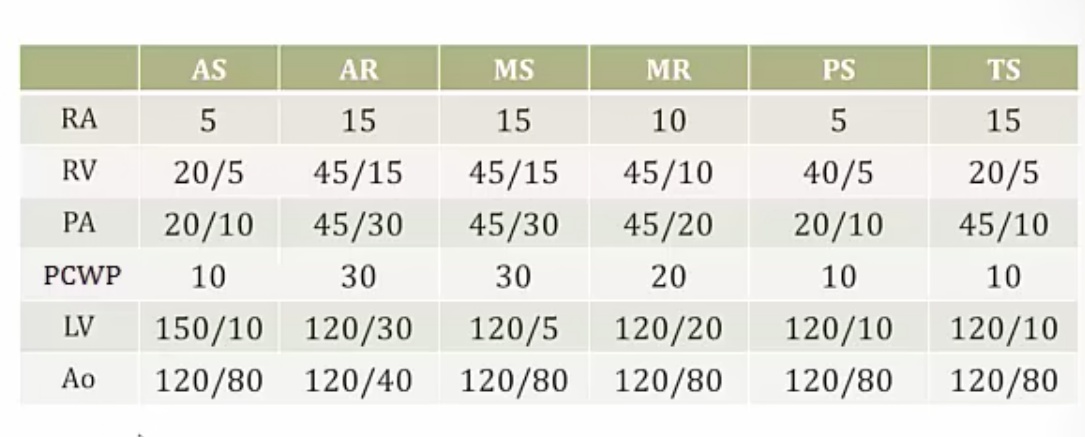
- start with aorta and work backwards, find first chamber with high pressure
- MR: no aortic regurgitation with low diastolic pressure
Shunt Run
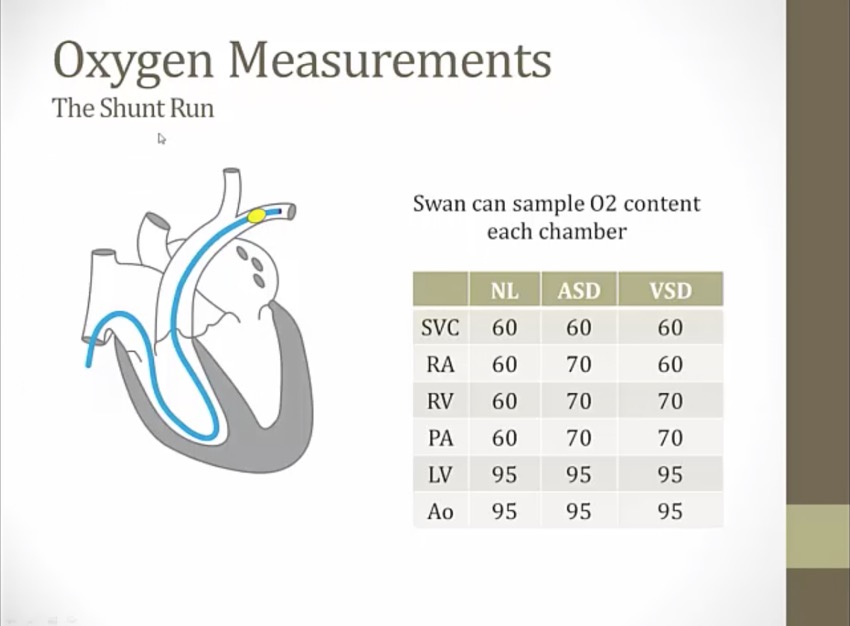
Backlinks





















